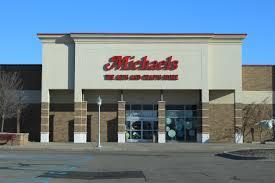Michaels Data Breach Response: 7 Facts

(Click image for larger view and slideshow.)
Retail chain Michaels last week disclosed that 2.6 million credit and debit cards may have been compromised at its stores over an eight-month period, beginning in May 2013.
When evidence of the breach came to light in January, Michaels launched a related investigation, with CEO Chuck Rubin issuing a statement to customers, warning them of what may have occurred.
In an April 17 update to customers, Rubin reported that two independent digital forensic investigation firms retained by the retailer found that criminals used “highly sophisticated malware” to infect some point-of-sale (POS) systems at Michaels and subsidiary Aaron Brothers stores, resulting in the theft of card-related information, including payment numbers and expiration dates.
“We have now identified and fully contained the incident, and the malware no longer presents a threat while shopping at Michaels or Aaron Brothers,” Rubin said.
Here’s what we now know about the breach at Michaels and Aaron Brothers:
1. Breach duration: eight months
Attackers targeted a subset of POS systems in use at Michaels stores from May 8, 2013, to January 27. “Only a small percentage of payment cards used in the affected stores during the times of exposure were impacted by this issue,” Rubin said. The same goes for 54 branches of Aaron Brothers, where related data theft began June 26, 2013, and lasted until February 27, 2014.
Given that the Michaels breach was detected only after the retailer was tipped off by a third party, just one month after Target reported experiencing a massive breach that resulted in the compromise of 40 million payment cards, should Michaels have been doing more to ensure that its POS systems weren’t infected with malware?
Gartner Research analyst Avivah Litan argues otherwise. “I don’t think it’s reasonable to expect retailers to have expert forensics team always on call investigating their network for breaches,” she says via email. “And even if they did have those teams, they can’t always spot various strains of malware.”
Rubin said in his letter to customers that neither of the information security firms hired to investigate the breach had previously seen the malware used to infect the Michaels and Aaron Brothers POS systems.
Michaels, of course, is far from the first retailer — or large business — to have not detected a breach of its network, but rather to have learned about it from a third party. “Detecting a breach post-facto is unfortunately the norm in the industry,” says Anup K. Ghosh, CEO of security firm Invincea, via email. “In most cases, companies find out about data breach and loss from an outside, third party, whether it is the FBI, an investigative reporter, a partner, or a customer.”
2. Michaels issued rapid warning to customers
Did Michaels respond to unconfirmed breach reports in a timely manner? The first related information appeared to come from sources cited by security journalist Brian Krebs, who told Krebs that they’d seen evidence of elevated fraud at the retailer.
The administrator of DataBreaches.net, a privacy advocate and data breach information blogger — who publishes under the handle “Dissent” — lauded Michaels for responding to that information by quickly warning its customers, thus allowing them to protect themselves. “I stopped using my card/shopping at Michaels immediately because if they couldn’t confirm that a breach had occurred, then any breach would still be ongoing. And why would I risk using my card at a store who acknowledged their system may have been compromised?” he asked.
In the wake of last week’s update from Michaels, however, he now feels “safer” using a credit card in its stores. “But then, I’m not the typical customer, I think,” he said.
3. Investigation duration: 80 days
What of the 11 weeks that it took investigators to review the potential breach and issue last week’s final report? Dissent said that timeline illustrates how difficult it can be to spot or piece together the particulars of any given data breach. “If it takes two firms with expertise months to identify the malware and compromise, is it realistic for consumers to expect retailers to be able to prevent or catch everything?” he says.
Breach investigations, by their nature, typically take time. “The fraudsters leave few traces and it’s difficult to learn just how many cards were actually compromised,” said Gartner’s Litan, noting that months of digital forensic work are often required to determine exactly how systems were compromised and what may have been stolen.
“This also happened at a major card processor that was breached,” she said. “The memory-resident malware is dormant much of the time in order to stay under the radar and not impinge on point-of-sale systems performance so in fact, it often only wakes up a few seconds every half hour or so to capture the payment card data. Figuring out which cards were in fact compromised is therefore a challenging task.”
4. Will retail threat sharing reduce breaches?
To help retailers share information on threats, the National Retail Federation (NRF) announced last week that it plans to launch a retail-focused Information Sharing and Analysis Center (ISAC), modeled on the one that now serves the financial services industry. “We believe a heightened and well coordinated information sharing platform such as a retail ISAC is a vital component for helping retailers in their fight against cyber attacks,” NRF president and CEO Matthew Shay said in a statement.
The retail ISAC is scheduled to launch in June.
Might the information sharing help prevent future breaches of the Michaels and Target ilk? “Yes, better information sharing about threats is critical,” said Litan, who has said that one of the biggest takeaways from the February 2014 RSA information security conference for her was that the retail industry wasn’t sharing threat intelligence.
“But it has to be detailed so that it can be acted upon,” she said. “The issue today is that detailed threat information that is actionable is not shared for fear of litigation.
5. Don’t blame retailers, blame system
Even with a retail-focused ISAC, however, don’t expect retail-related breaches to decline until today’s outdated — and arguably still insecure — payment card ecosystem gets overhauled. That will take much more than just adding EMV chips to cards so that people using their cards in person have to enter a PIN code to authorize the transaction.
To be clear, EMV wouldn’t have stopped the Target breach, and likely wouldn’t have stopped the malware that Michaels found on its POS systems either. Furthermore, retailers arguably shouldn’t even have to handle unencrypted card data in the first place. “You can’t count on 20 million plus card-accepting enterprises and retailers to patch an inherently insecure payment system,” said Litan. “The answer lies in making the payment system itself more secure and that requires work from the entire ecosystem.”
While EMV will help, Litan noted that it may take 10 years to become widespread in the United States. But there are other “solid security solutions” that the industry could put in place to help fix today’s “inherently insecure payment system,” she said. “These include point-to-point encryption where card data would be encrypted and protected much like PINs are today when they are entered into card readers. The second includes tokenization of the card data which substitutes the card number with an alias.”
6. Short-term solution: stop using cards?
Pending more big-picture security fixes, some information security experts are opting out of using cards that don’t offer better security. Writing in a recent SANS Institute newsletter, for example, William Hugh Murray, an information assurance professor at the Naval Postgraduate School, said he’s shredded up all of his MasterCard and Visa cards, at least until the card providers start using EMV, although he’s kept his American Express card.
“I continue to use AmEx only because they send me intraday alerts for all activity on my account,” he said. “This is an efficient compensating control for the fundamental vulnerability of credit card numbers to fraudulent reuse. It addresses both card counterfeiting and ‘card not present’ fraud. It helps to restore user confidence.”
7. Payment card providers preview security improvements
On a related note, however, MasterCard and Visa last month announced that they’ve formed a new, cross-industry group — composed of “banks of all sizes, credit unions, acquirers, retailers, point-of-sale device manufacturers and industry trade groups” — to tackle the introduction of EMV in the United States, as well as adding tokenization and point-to-point encryption.
To date, however, the companies have offered no timeline for when related changes might occur.
Private clouds are moving rapidly from concept to production. But some fears about expertise and integration still linger. Also in the Private Clouds Step Up issue of InformationWeek: The public cloud and the steam engine have more in common than you might think. (Free registration required.)
Mathew Schwartz is a freelance writer, editor, and photographer, as well the InformationWeek information security reporter.
View Full Bio
Article source: http://www.darkreading.com/attacks-breaches/michaels-data-breach-response-7-facts/d/d-id/1204630?_mc=RSS_DR_EDT
